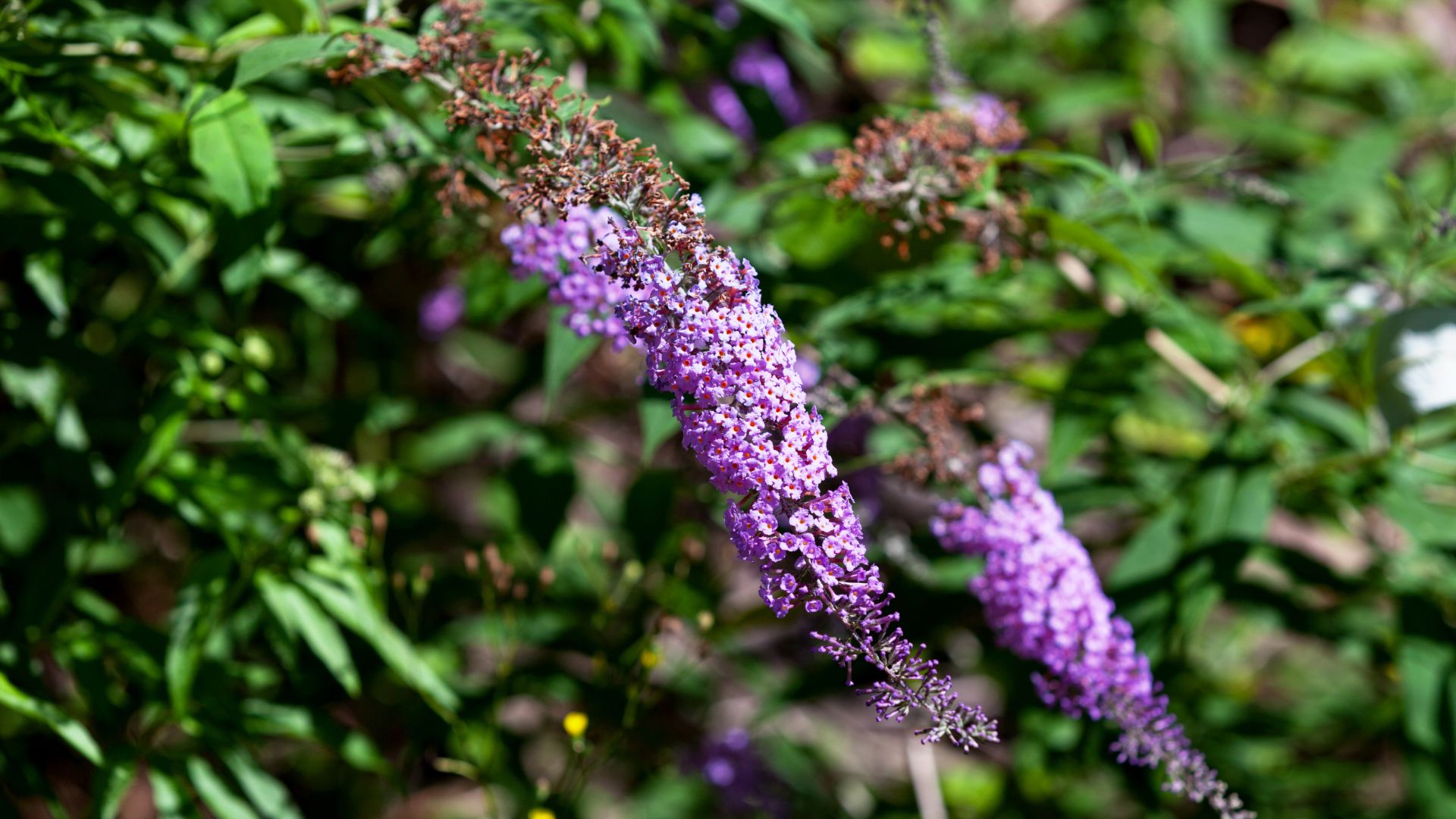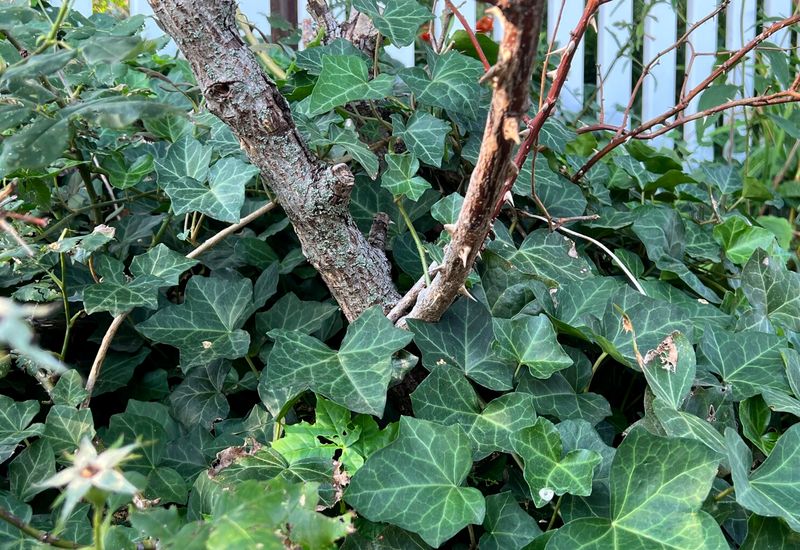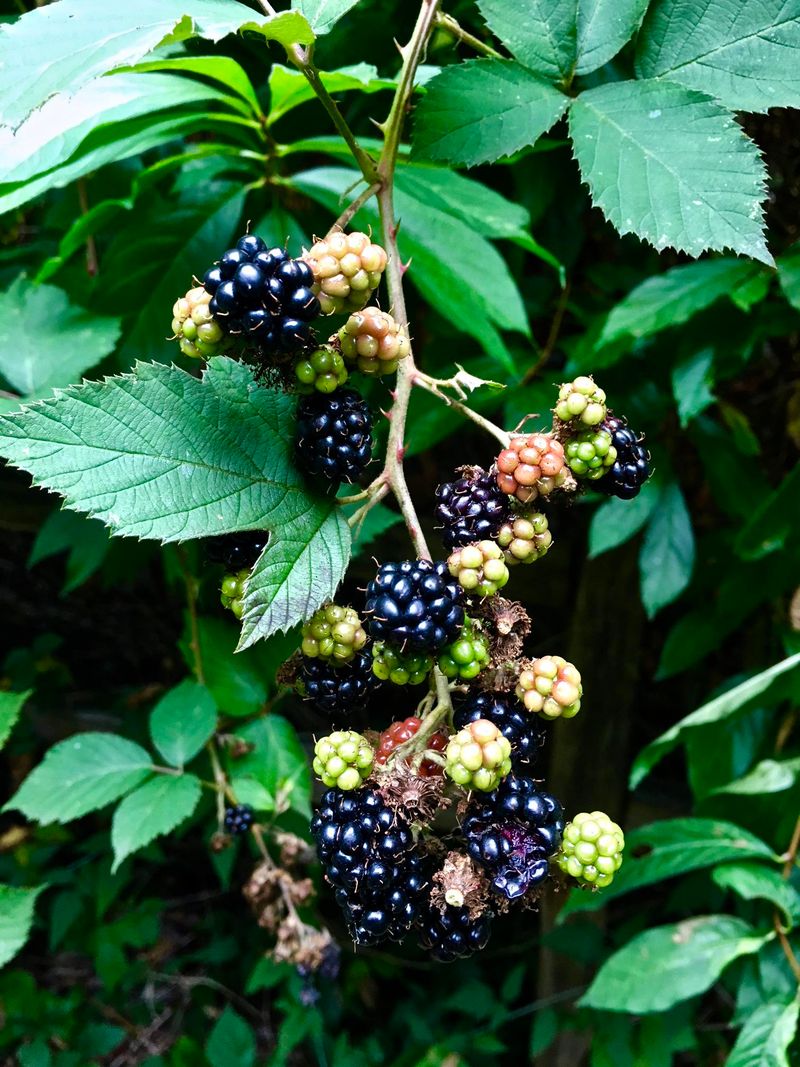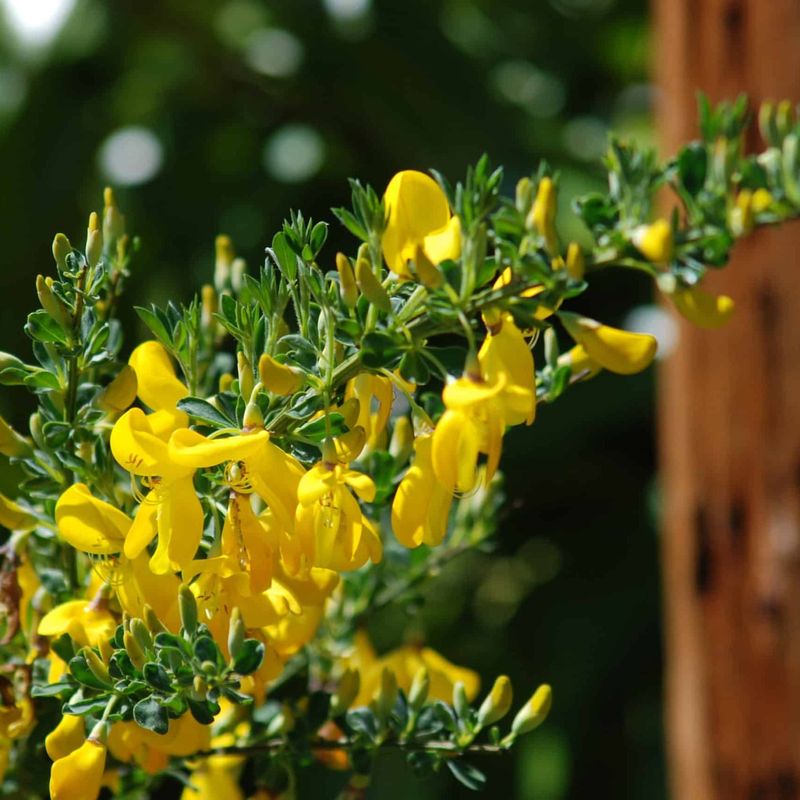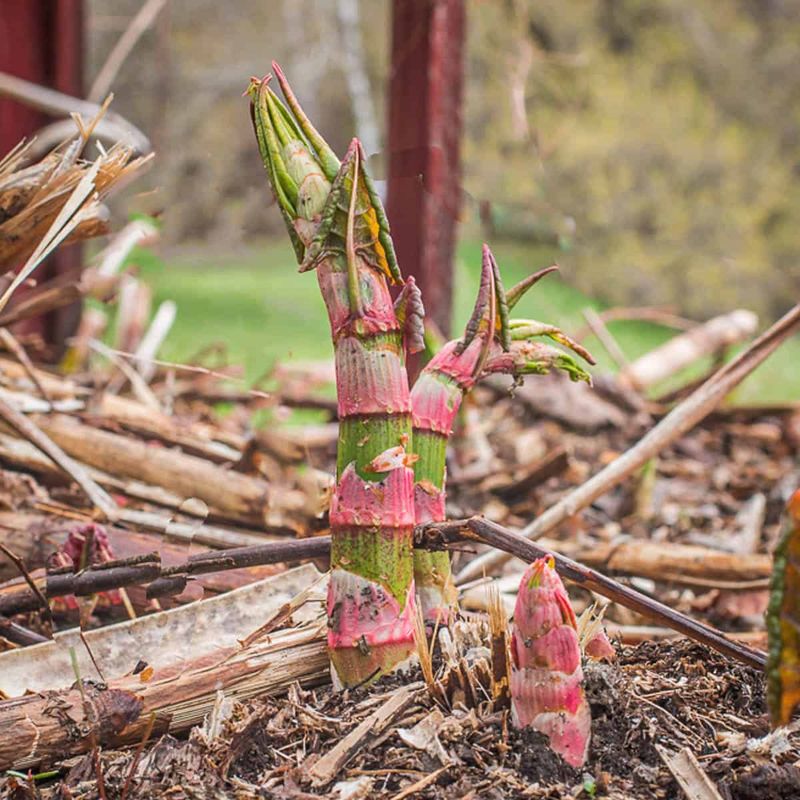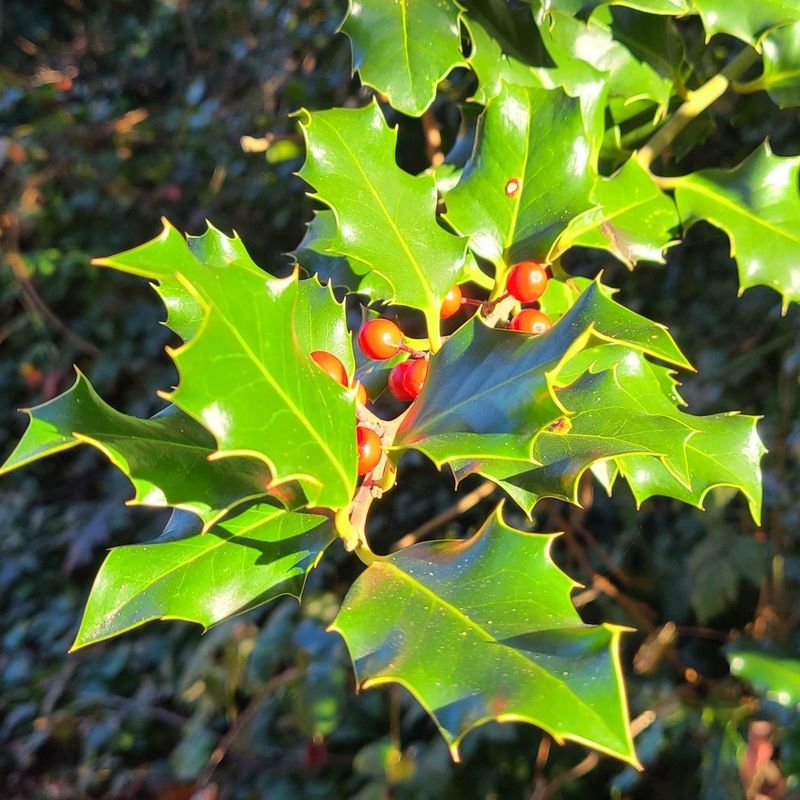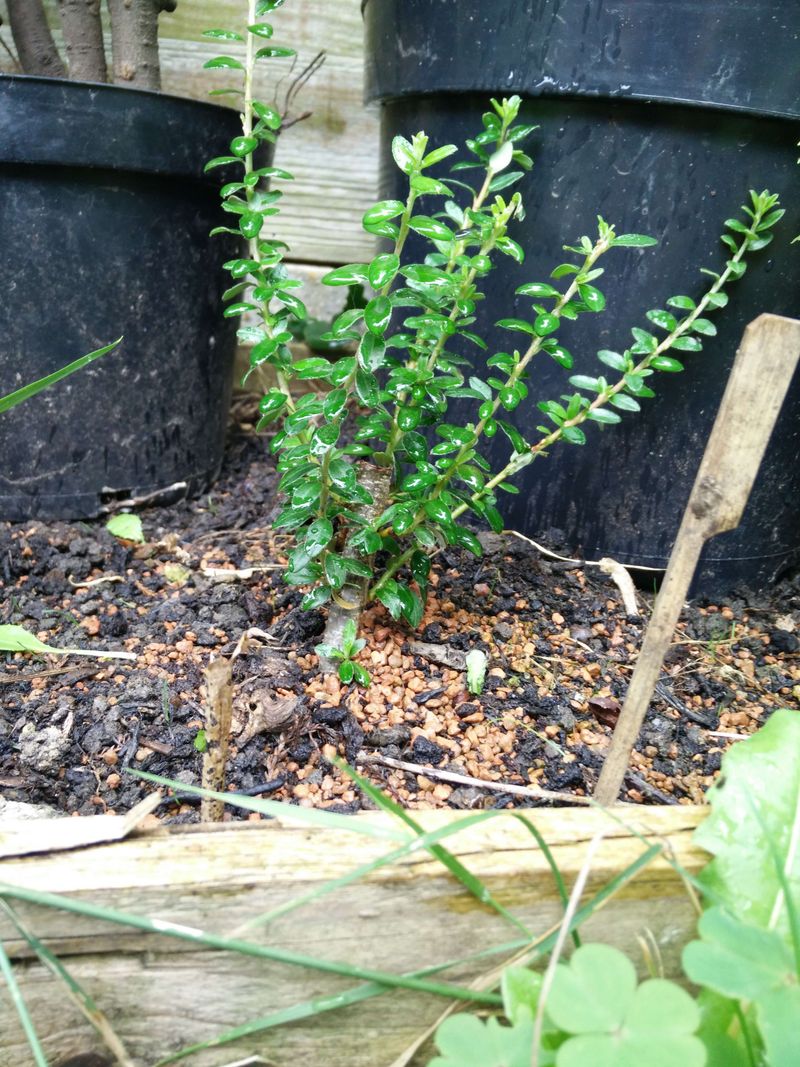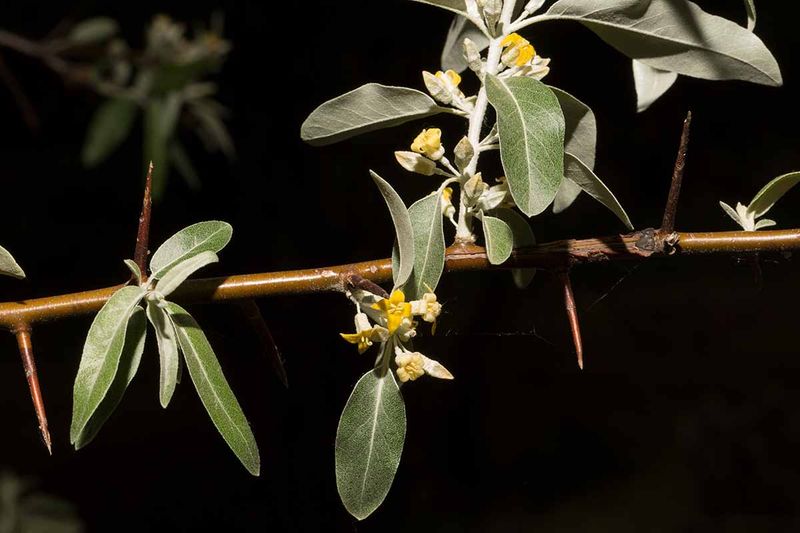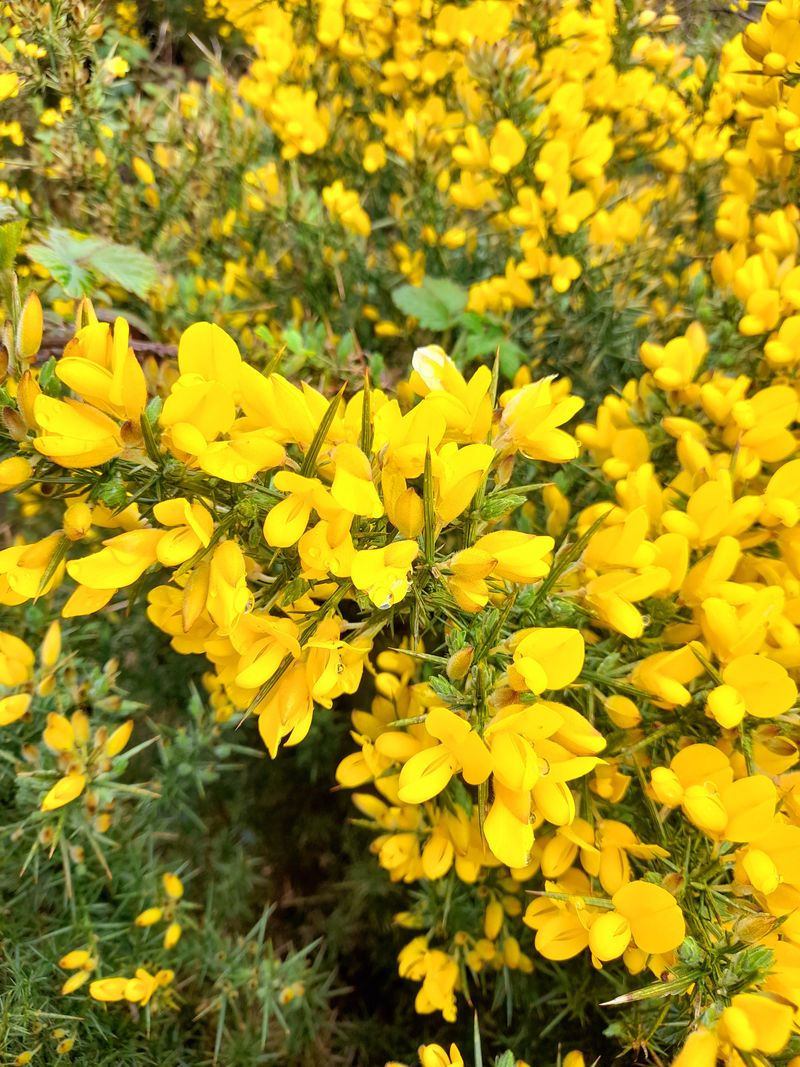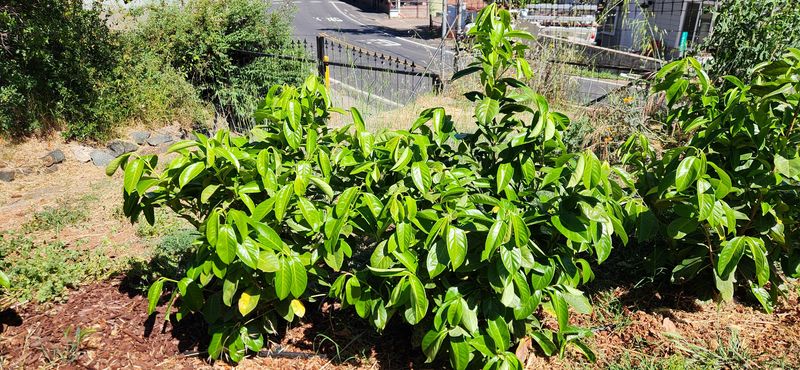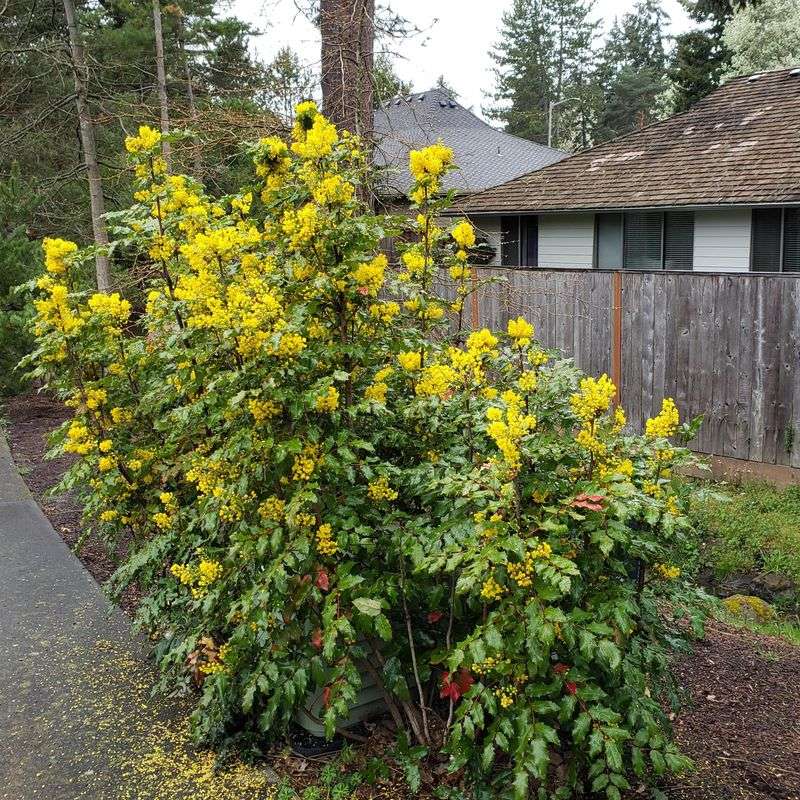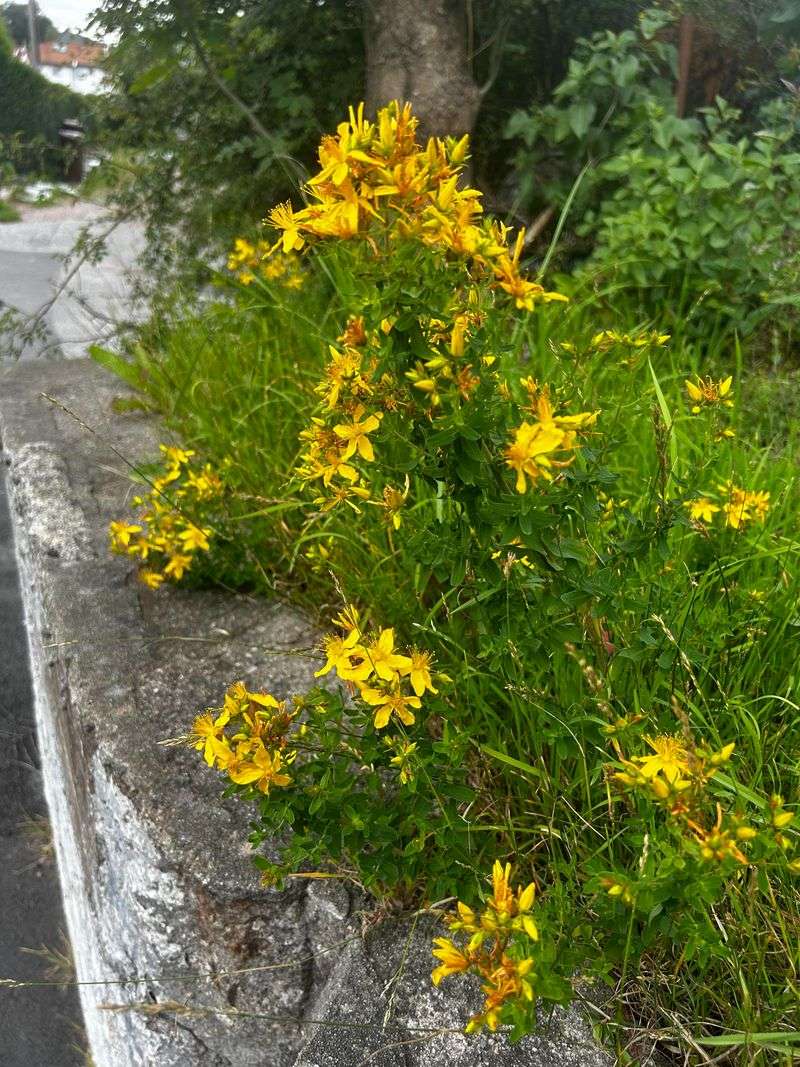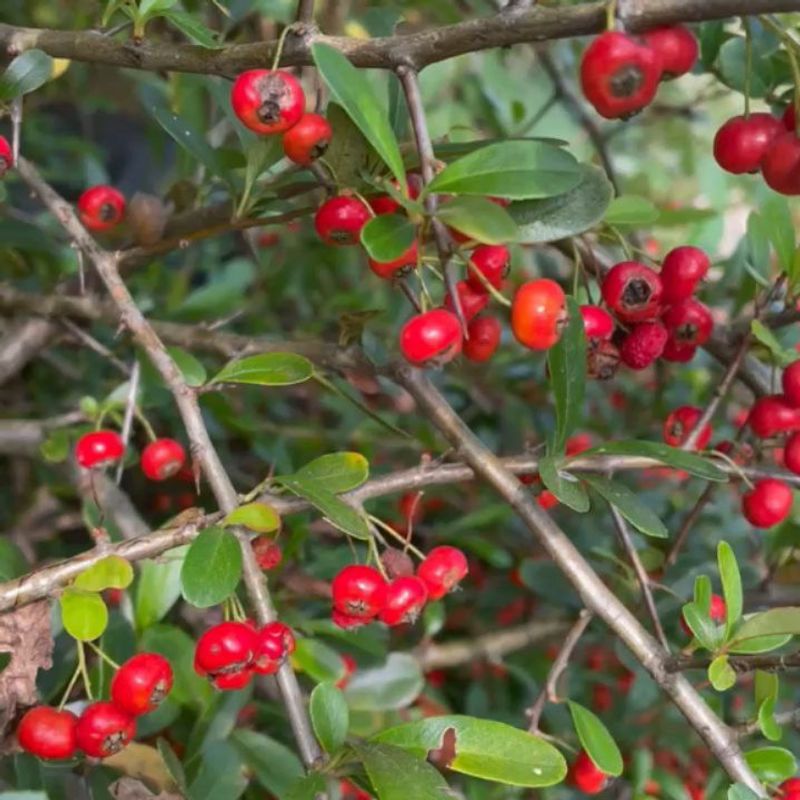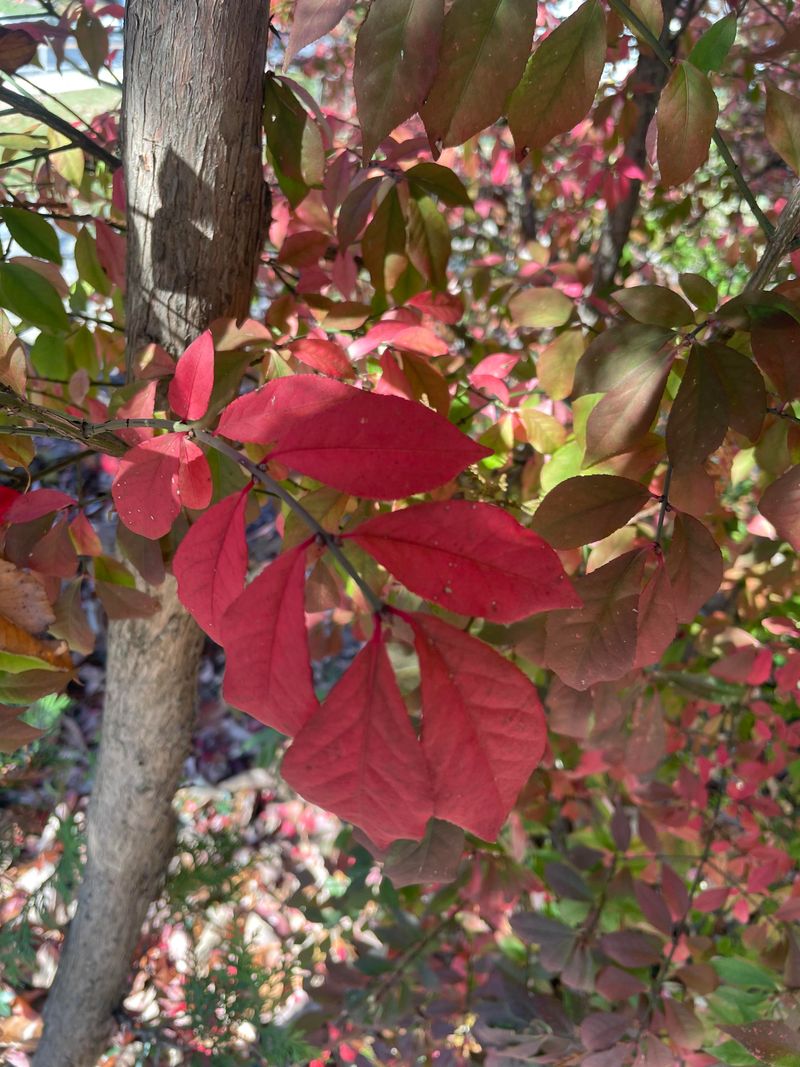Oregon’s wet climate and fertile soil make it a paradise for plants – unfortunately, that includes the ones you don’t want taking over your yard. I’ve spent years battling aggressive shrubs that seemed innocent when first planted, only to watch them march across my garden beds with surprising speed.
From coastal gardens to high desert landscapes, certain shrubs can quickly transform from neat additions to garden bullies. In my own Oregon backyard, I learned this lesson the hard way after planting what I thought was a ‘contained’ butterfly bush, only to spend the next three summers pulling up its offspring from every corner of my yard.
The following shrubs are particularly problematic throughout Oregon, thanks to our mild winters and ample rainfall. While many offer beautiful flowers or interesting foliage, their aggressive spreading habits make them poor choices for most home landscapes – unless you enjoy spending weekends digging up unwanted plants!
1. English Ivy (Hedera helix)
Not just a vine but also a shrub-like form when mature. The thick, woody stems climb trees and buildings while spreading across the ground at alarming rates in Portland’s damp climate.
Left unchecked, English ivy smothers native plants and can even topple trees with its weight. Many Oregon neighborhoods organize regular ivy-pulling parties to combat this invader.
Removal requires persistence—cut climbing vines at the base and dig out all roots to prevent regrowth.
2. Himalayan Blackberry (Rubus armeniacus)
Armed with vicious thorns, these blackberry canes can grow up to 15 feet in a single season across Oregon’s western valleys. The birds love the berries but spread seeds everywhere in their droppings.
Despite producing tasty fruit, this blackberry quickly forms impenetrable thickets that crowd out everything else. The extensive root system makes complete removal extremely difficult.
Cut canes to the ground and dig out the crown—repeated cutting will eventually exhaust the plant’s energy reserves.
3. Butterfly Bush (Buddleja davidii)
Don’t let those beautiful purple flower spikes fool you! Each bush produces thousands of windborne seeds that germinate readily in Oregon’s disturbed soils, especially along the I-5 corridor.
Young seedlings pop up everywhere—in garden beds, sidewalk cracks, and even gutters. While newer sterile varieties exist, many garden centers still sell the invasive types.
For existing plants, deadhead religiously after flowering to prevent seed production, or consider replacing with native alternatives like Oregon grape.
4. Scotch Broom (Cytisus scoparius)
Bright yellow flowers might look cheerful along Oregon highways, but each plant releases thousands of seeds that remain viable for decades in our soil. The seeds pop explosively from pods in summer heat.
Once established in your yard, you’ll face a long-term battle. Scotch broom alters soil chemistry, making it harder for other plants to grow nearby. It’s particularly problematic in Southern Oregon’s drier regions.
Pull young plants when soil is moist, making sure to remove the entire root. Larger specimens require cutting and herbicide treatment.
5. Japanese Knotweed (Fallopia japonica)
One of Oregon’s most aggressive invaders, knotweed can regenerate from a fragment of stem or root as tiny as half an inch. The hollow, bamboo-like stems form dense thickets near waterways throughout the state.
Root systems extend 10 feet deep and can damage foundations, pipes, and pavement. In spring, watch for reddish shoots that rapidly grow into 8-foot canes with heart-shaped leaves.
Never attempt to remove by cutting or mowing—this actually stimulates growth! Professional treatment is recommended for established patches.
6. Holly (Ilex aquifolium)
Those festive holiday berries become a problem when birds spread them across Oregon forests. Young holly plants tolerate deep shade, allowing them to establish under native trees where they form dense thickets.
Female plants produce thousands of berries each year, creating new invasions far from the original source. The prickly leaves make removal uncomfortable work, especially in the Coast Range where holly thrives.
Remove small plants by pulling when soil is moist. For larger specimens, cut at the base and immediately treat the stump with herbicide to prevent resprouting.
7. Cotoneaster (Cotoneaster horizontalis)
Originally planted for its attractive arching branches and red berries, cotoneaster has escaped gardens throughout the Willamette Valley. Birds eagerly consume the berries and deposit seeds everywhere.
The seedlings establish easily in Oregon’s climate, popping up in rockeries, under shrubs, and along fences. Their extensive root systems make them difficult to remove once established.
Regularly check your yard for seedlings, which are easiest to pull when young. Consider replacing mature plants with native alternatives like Oregon grape or snowberry.
8. Russian Olive (Elaeagnus angustifolia)
Silvery leaves might look attractive, but this thorny shrub quickly escapes cultivation in Eastern Oregon’s drier landscapes. The roots fix nitrogen, giving it a competitive advantage over native plants in poor soils.
Birds spread the olive-like fruits widely, creating new infestations along waterways and disturbed areas. Once established, Russian olive forms dense thickets that block access to streams and displace native vegetation.
Young plants can be hand-pulled, but established trees require cutting and herbicide treatment to prevent vigorous resprouting from the stump.
9. Privet (Ligustrum spp.)
Common in older Oregon neighborhoods as a hedge plant, privet doesn’t stay where it’s planted. Birds consume the black berries and deposit seeds throughout natural areas, especially in the Portland metro region.
The seedlings establish easily in forest understories and along streams, forming dense thickets that shade out native wildflowers. The white flower clusters produce pollen that triggers allergies for many Oregonians.
Regularly check for seedlings around your property and remove them while young. Consider replacing older hedges with native alternatives like Oregon boxwood.
10. Gorse (Ulex europaeus)
Notorious along the Oregon coast, gorse forms impenetrable thickets of spiny branches that can reach 10 feet tall. The yellow flowers might look pretty, but this plant creates extreme fire hazards in coastal communities.
Gorse seeds remain viable in soil for 30+ years, making eradication nearly impossible once established. The 1936 Bandon fire, which destroyed the entire town, was fueled primarily by gorse.
Young plants can be pulled wearing heavy gloves. Mature stands require professional management, often including cutting, herbicide, and prescribed burning.
11. Laurel (Prunus laurocerasus)
Often planted as a privacy hedge, English laurel doesn’t respect property boundaries in Oregon’s west side communities. Birds spread the black cherry-like fruits, creating new plants in forests and natural areas.
The large, glossy leaves create dense shade that prevents native plants from growing underneath. When cut, laurel stumps resprout vigorously, making removal difficult without herbicide treatment.
Regularly check for seedlings, which pull easily when young. For mature hedges, consider replacing with native alternatives like tall Oregon grape or evergreen huckleberry.
12. Oregon Grape Imposters (Mahonia aquifolium cultivars)
While native Oregon grape belongs in local gardens, certain aggressive cultivars spread far beyond their intended boundaries. The purple berries attract birds that distribute seeds across neighborhoods and into natural areas.
Unlike their well-behaved native cousins, these aggressive varieties send out underground runners that pop up several feet from the original plant. They’re particularly problematic in Portland’s west hills neighborhoods.
Dig out unwanted shoots as they appear, making sure to remove all of the yellow root. Consider planting true native varieties instead of the more aggressive cultivars.
13. Barberry (Berberis thunbergii)
Popular for its colorful foliage and deer resistance, Japanese barberry doesn’t stay put in Oregon landscapes. Birds spread the bright red berries, creating new thorny problems throughout the property.
The dense, spiny growth creates perfect tick habitat—a serious concern as Lyme disease-carrying ticks expand their range in Oregon. The sharp thorns make removal painful, so wear thick gloves.
Pull seedlings when young and consider replacing mature plants with native alternatives like red-twig dogwood or ninebark that provide similar landscape benefits without the invasive tendencies.
14. St. John’s Wort (Hypericum calycinum)
Sold as an easy groundcover for difficult spots, this low-growing shrub spreads rapidly via underground stems in Oregon’s moist western valleys. What starts as a small planting can quickly take over entire hillsides.
Particularly aggressive in the Willamette Valley, St. John’s Wort forms dense mats that exclude native plants. The yellow flowers produce seeds that wash downhill during our rainy winters, creating new colonies.
Control requires persistent digging to remove all rhizomes. Even small fragments left in the soil will regenerate into new plants.
15. Burning Bush (Euonymus alatus)
Planted for spectacular fall color, burning bush produces abundant berries that birds distribute throughout Oregon neighborhoods. Seedlings emerge in garden beds, natural areas, and even in sidewalk cracks.
The adaptability of this shrub allows it to thrive in both sun and shade across most of western Oregon. Once established, the extensive root system makes complete removal challenging without significant effort.
Pull seedlings when young and consider replacing mature specimens with native alternatives like vine maple or serviceberry that provide similar fall color without the invasive tendencies.
16. Firethorn (Pyracantha coccinea)
Those brilliant orange-red berries that brighten winter landscapes become a problem when birds spread them across Oregon neighborhoods. New plants emerge in fence lines, under trees, and in natural areas far from the original planting.
The vicious thorns make removal painful work, especially when plants have grown large. In Southern Oregon’s milder winters, firethorn can form impenetrable thickets along property boundaries.
Wear heavy gloves and long sleeves when removing. Cut larger specimens at the base and dig out the root crown to prevent resprouting.
17. Winged Euonymus (Euonymus fortunei)
Marketed as an easy groundcover, this woody vine quickly morphs into a climbing shrub that overtakes trees and structures throughout Oregon’s western valleys. The fleshy fruits attract birds that spread seeds widely.
Particularly problematic in Portland’s older neighborhoods, winged euonymus forms dense mats that smother native understory plants in nearby natural areas. The climbing vines can reach 40+ feet into tree canopies.
Pull young plants completely, including all roots. Established patches require cutting vines at the base and applying herbicide to prevent vigorous resprouting.

